
Electric cars have been gaining in popularity over the years, thanks to their eco-friendliness, energy efficiency, and technological innovation. However, there is one question that many new and prospective electric vehicle (EV) owners ask: how far can an electric car go on one charge?
The answer can vary depending on several factors, including the make and model of the car, the age and condition of the battery, driving style and habits, terrain, weather conditions, and many others. In this article, we’ll explore each of these variables and determine how they affect the range of an electric car.
Table of Contents
What factors impact the range of an electric car?
Before we get into the specifics of range, it’s important to understand some basic concepts. The first thing to know is that electric car range is measured in miles per kWh (kilowatt-hour). This is a measure of how much energy the car’s battery can supply per hour of use. The higher the miles per kWh, the further the car can travel on a single charge.
Another important consideration is that electric car range is affected by a variety of factors, some of which are within the driver’s control and some of which are not. These factors include:
Battery capacity
The most critical factor in determining electric car range is the capacity of the battery. All else being equal, a larger battery will provide a longer range. However, larger batteries are also more expensive, and their weight can affect handling and acceleration.
Battery technology is continually evolving, and new batteries are becoming more energy-dense, meaning they can store more electricity in a smaller size. This trend has led to longer ranges for modern electric cars.
Make and Model
Different makes and models of electric cars may have significantly different ranges, even with similar battery sizes. This is because other factors, such as vehicle weight, drivetrain efficiency, and aerodynamics, can affect range. For example, a large SUV will typically have a shorter range than a small hatchback, even with a similar battery capacity.
Also read: EVs with the Longest Driving Range, Ranked
Driving Conditions
Driving conditions can have a significant impact on electric car range. Some of the most important factors to consider include:
- Speed: The faster you drive, the more energy the car uses, which reduces range.
- Temperature: Extreme temperatures (both cold and hot) can reduce battery efficiency and therefore range.
- Wind: Driving into a headwind can reduce range, while a tailwind can extend it.
To illustrate how driving conditions can affect range, let’s look at the Tesla Model S. According to Tesla’s website, the Model S Long Range has a range of 402 miles under ideal conditions (e.g. driving at a constant 55 mph on a flat road in 70-degree weather). However, under less ideal conditions (e.g. driving at 70 mph in 20-degree weather with the heater on), the range drops to just 256 miles.
Driving Style
Driving style can also impact electric car range. Aggressive driving (e.g. rapid acceleration, hard braking) uses more energy than smoother, more relaxed driving. To maximize range, it’s important to accelerate and brake smoothly, and to maintain a consistent speed whenever possible.
Terrain
Topography can also impact the range of an electric car. Hilly or mountainous terrain can require more energy to travel up and down, reducing the range of an EV. Conversely, flat terrain can result in an extended range for the same amount of energy consumption.
Weather conditions
Weather conditions can significantly affect the range of an electric car. Cold weather can reduce the range due to the increased energy required for cabin heating, while hot weather can reduce the lifespan of the battery. Rain, snow, and wind can also reduce the range of an electric car.
Use of Heating and Air Conditioning
Electric vehicle heating and air conditioning systems can be significant electricity consumers. Running these systems can significantly reduce range, especially if the car is not pre-conditioned before driving. Many EVs have efficient HVAC systems that can reduce energy consumption, but the use of climate control systems will always have some impact on range.
Driving speed
Driving speed is another critical variable that can affect the range of an electric car. High-speed driving on highways and freeways consumes more energy than driving at slower speeds on local roads, reducing the range of an EV.
Weight and cargo
The weight and cargo of an electric car can also impact its range. Carrying too much weight or cargo can consume more energy, reducing the range of an EV.
Battery Age and Maintenance
As electric vehicle batteries age, they can lose some of their capacity, leading to a reduction in range. Regular maintenance, such as keeping the battery charged and avoiding deep discharges, can help prolong battery life and maintain range.
Charging Infrastructure
Finally, the availability of charging infrastructure is an important consideration when it comes to electric car range. If you live in an area with few charging stations, you may be limited in how far you can travel on a single charge. However, if you have access to a robust charging infrastructure, you can travel much farther.
Long-Range Electric Vehicles
There are a number of EVs coming with increasingly longer ranges. Let’s look at 7 models that offer the longest ranges currently available.
1. Tesla Model S Long Range

Up first is the Tesla Model S Long Range, with a range of up to 405 miles on a single charge. Despite being around for quite a while, the Model S remains the leading electric vehicle with the longest range in the world. Tesla has been at the forefront of electric technology since the beginning, and this shows in their vehicles. With a luxurious interior and plenty of features, the Tesla Model S Long Range is an excellent option for anyone looking for a long-distance electric car.
2. Tesla Model X Long Range

The Tesla Model X Long Range offers up to 371 miles of range on a single charge. This vehicle is designed with practicality and performance in mind, making it the ideal choice for those who want a luxurious and efficient car. The Model X has generous space in its interior, offering seating for up to seven passengers, and a new and improved heat pump. Its towing capacity has been increased to 5,000 pounds, making it more versatile than other EVs on the list.
3. Tesla Model 3 Long Range

A must-have EV from Tesla, the Model 3 Long Range offers up to 360 miles of range on a single charge. The Model 3 is a more affordable vehicle compared to other Tesla models while still offering a great range. This EV is central to Tesla’s goal of making electric driving accessible to the masses. The Model 3 has an innovative design and a spacious interior.
4. Lucid Air Dream Edition
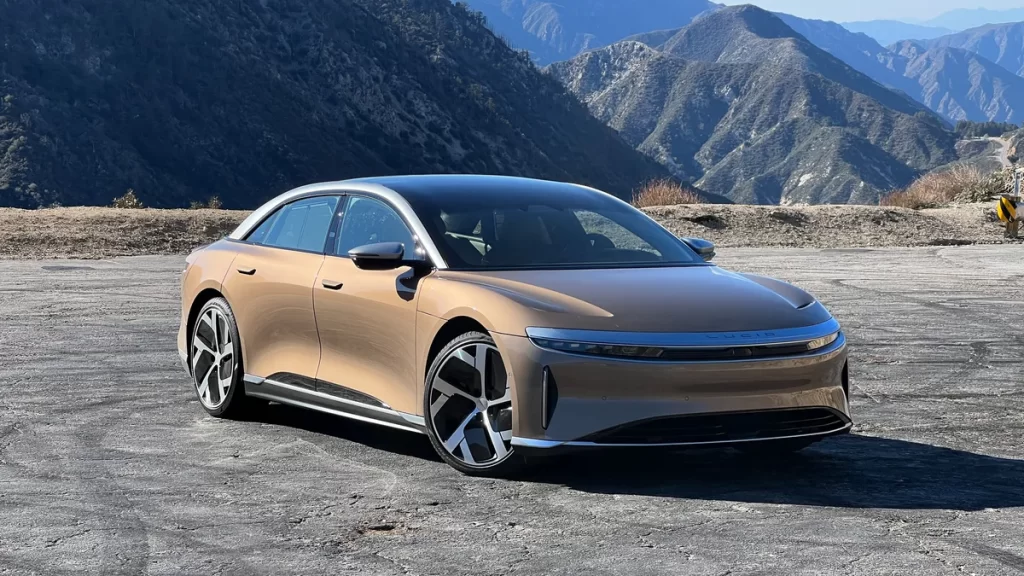
The Lucid Air Dream Edition is a new participant to the electric vehicles space. This vehicle boasts up to 517 miles of range on a single charge, the highest-mileage of any EV. You may not have heard of Lucid Motors, but it’s developing a car that could challenge the dominance of Tesla. The vehicle has a unique design with opulent features. It comes at a premium price, but it’s well worth it for anyone looking for a luxury EV that offers extraordinary range.
5. Ford Mustang Mach-E Extended Range

Next up is the Ford Mustang Mach-E Extended Range. This EV is a fully electric crossover SUV from Ford with up to 300 miles of range on a single charge. It’s a highly efficient vehicle powered by a 98.8 kWh battery pack. The Mustang Mach-E has a powerful, sporty look with a spacious and comfortable interior.
6. Porsche Taycan Turbo S

Porsche is another brand that has entered the EV market with its Porsche Taycan Turbo S model. This vehicle provides up to 282 miles of electric range on a single charge, which may not seem much compared to other EVs on this list. However, the Porsche Taycan Turbo S uses an 800-volt architecture, which means the car can recharge from a (DC fast charger) at an impressive rate. The vehicle also offers high-end luxury, sportiness, and performance.
7. Audi e-tron GT RS

Lastly, the Audi e-tron GT RS offers up to 238 miles of range on a single charge. Although not as much as some other EVs on this list, this vehicle offers luxurious performance, sportiness, and luxurious styling. You get a stunning sculpted design, all-wheel drive, and a unique interior design.
Upcoming Long-Range EVs
1. Lucid Air
The Lucid Air is an upcoming luxury electric sedan that boasts a range of over 500 miles per charge. The vehicle also features a 1080 horsepower engine which can go from 0-60 mph in just 2.5 seconds.
2. Rivian R1T
The Rivian R1T is an all-electric off-road pickup truck that has a range of up to 400 miles. The R1T features three motors, on-board air compressor, and a 750-horsepower powertrain that can go from 0-60 mph in just 3 seconds.
3. Ford Mustang Mach-E
The Ford Mustang Mach-E is an all-electric SUV that is set to debut in late 2020. The Mach-E is expected to have a range of up to 300 miles on a single charge and features a modern design and cutting-edge technologies.
Shortest Range EV
What Do We Mean by Shortest Range?
Before we explore the world of low-range EVs, let’s define what we mean by ‘shortest range’. Currently, most electric vehicles on the market have an EPA-rated range of 200-300 miles on a single charge. Therefore, any electric vehicle with a range of below 100 miles can be considered a short-range EV.
While driving an EV with a range of below 100 miles may sound a bit unpractical for day-to-day driving, these cars have their own pros and cons that we will discuss further on.
Benefits of Driving a Short-Range EV
Despite the short range, there are benefits to driving an EV with a smaller battery that may make it suitable depending on your needs:
Lower Purchase Cost
For those who are looking to make the switch to EVs, a shorter-range electric car may be a more affordable option. Not only are lower-priced models more accessible to a wider range of buyers, but they also cost less to produce given their smaller battery.
Lower Charging Times
Short-range electric cars usually have smaller battery packs meaning that they require less time to charge. Some models can get a full charge within just a few hours using a standard domestic plug. With less time spent charging, this can be beneficial for drivers who have limited charging options in their area or for those who require a quick turnaround.
More Eco-Friendly
Short-range electric cars have smaller batteries. They have a reduced carbon footprint compared to higher range EVs as a result of the reduced production process and reduced usage of rare-earth metals. Being environmentally friendly is great for the planet, but also good for your wallet in the long run.
Drawbacks of Short-Range EVs
Of course, short-range EVs have their downsides too, which you should take into account before making a purchase.
Limited Range
The biggest disadvantage of a short-range EV is that it has limited range. This means being strategic when it comes to trip planning. Short-range EV drivers may need to plan their route around charging points, or choose a “range extending” charging plan from their electricity supplier.
Reduced Practicality
Short-range EVs may have lower practicality if you need to cover long distances on a daily basis. The battery will run down faster, and you may need to recharge more often, requiring more planning and charging points may not be as readily available.
Limited Technology
Due to smaller battery size and price point some short-range electric vehicles may not be as tech-heavy. For example, some of the earlier models may have less advanced media systems and safety features.
Top Short-Range EVs
With the benefits and drawbacks in mind, you may be wondering which EVs are considered to have the shortest range. Below we have outlined the top five electric cars with the shortest range:
| Make & Model | Range (Miles) | MSRP |
|---|---|---|
| Smart EQ ForTwo | 58 | Starting at $23,900 |
| Mini Electric | 110 | Starting at $29,900 |
| Fiat 500e | 84 | Starting at $33,460 |
| Honda Clarity Electric | 89 | Starting at $34,290 |
| Chevrolet Spark EV | 82 | No longer in production |
| Mitsubishi i-MiEV | 62 | No longer in production |
| Ford Focus Electric | 76 | No longer in production |
| Nissan Leaf (2011-2017) | 84 | No longer in production |
Let’s take a closer look at each of these models to help you make a more informed purchasing decision.
Smart EQ ForTwo
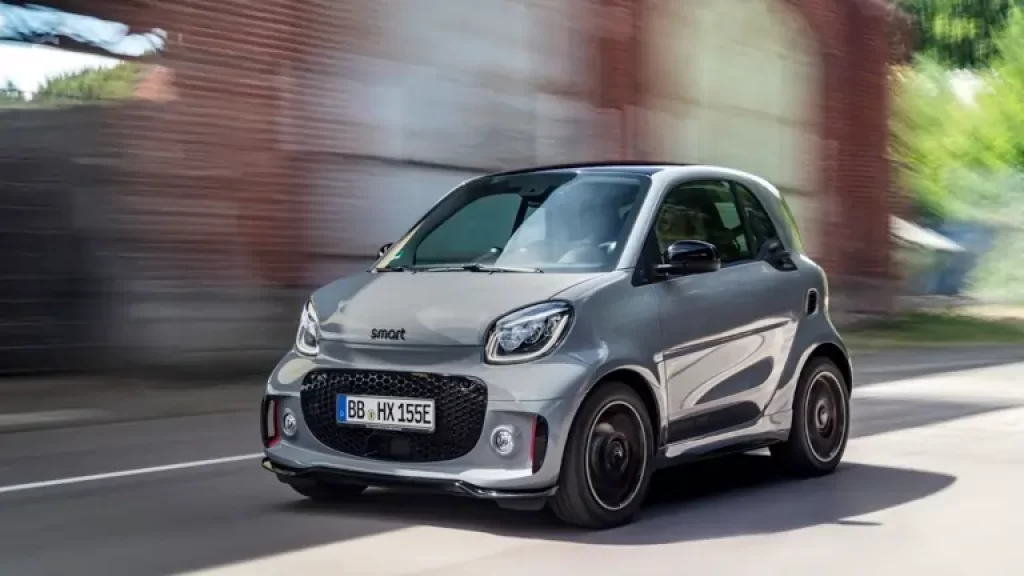
The Smart EQ ForTwo is a two-seat subcompact car that’s been on the market since 2007 and is now fully electric. This vehicle has a range of just 58 miles on a single charge, making it the shortest range EV on the market. Despite its short range, this EV is an excellent choice for urban commute due to its compact size and maneuverability.
Mini Electric
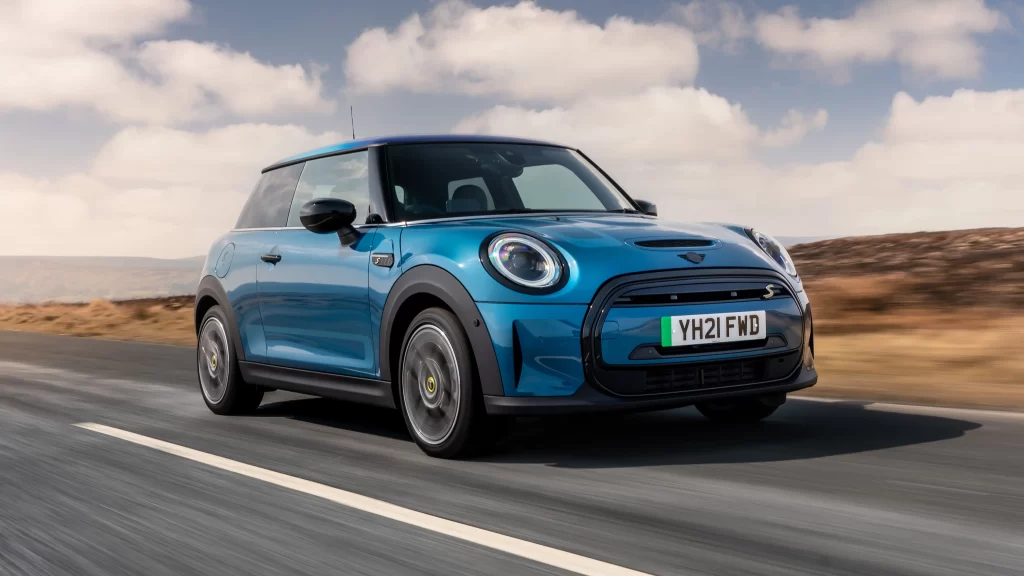
The Mini Electric is the British brand’s first all-electric vehicle, offering a range of 110 miles on a single charge. The Mini Electric features an attractive design, a comfortable interior, and quick acceleration, making it a fun and practical choice for city driving.
Fiat 500e
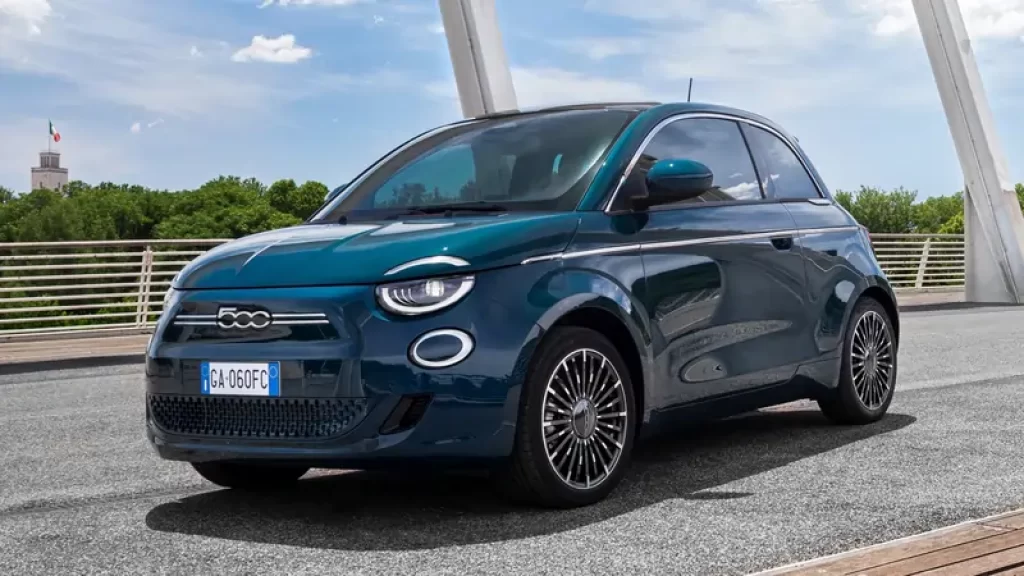
The Fiat 500e is a two-door city car with a range of 84 miles on a single charge. It shares its design with its gasoline-powered counterpart, and its compact size makes it a fantastic choice for driving in crowded cities.
Honda Clarity Electric

The Honda Clarity Electric is the all-electric version of the larger Clarity model and offers a range of 89 miles on a single charge. The Clarity Electric features a spacious interior and a comfortable ride, making it an ideal choice for longer commutes.
Chevrolet Spark EV

The Chevrolet Spark EV is no longer in production, but it remains one of the shortest range EVs on the market, with a range of 82 miles on a single charge. The Spark EV is a subcompact hatchback that was only available in select markets during its five years on the market.
Mitsubishi i-MiEV
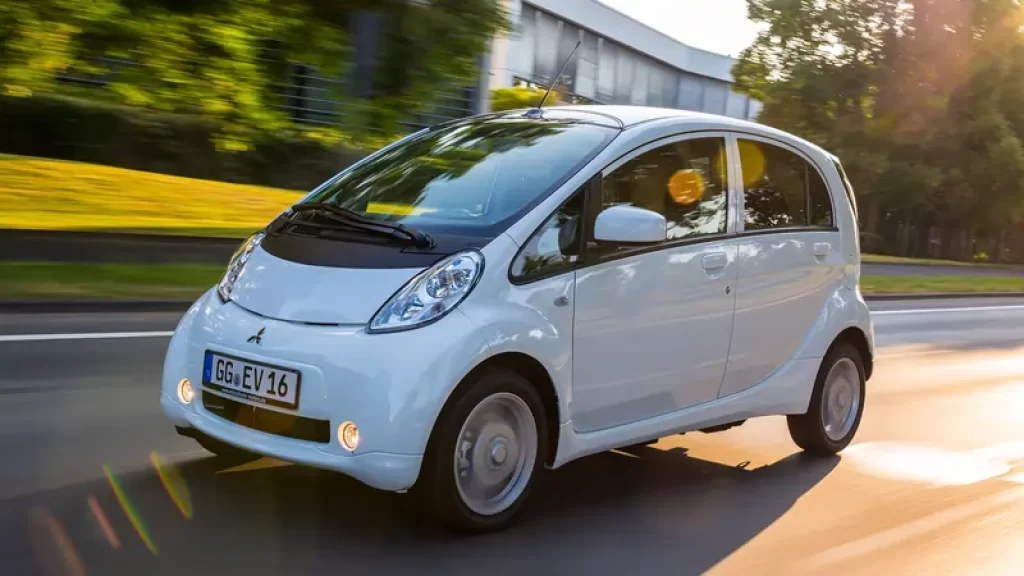
The Mitsubishi i-MiEV is another defunct vehicle that was only available in certain markets during its time on the market. It featured a range of 62 miles per charge, making it an excellent option for city driving or commuting.
Ford Focus Electric
The Ford Focus Electric is no longer in production, but it was one of the first all-electric vehicles from a major automaker. It offered a range of 76 miles on a single charge and was praised for its comfortable ride and solid acceleration.
Nissan Leaf (2011-2017)
The first-generation Nissan Leaf was produced from 2011-2017 and offered a range of 84 miles on a single charge. This vehicle was a game-changer in the electric vehicle market and helped pave the way for many of the EVs available today.
Are Short-Range EVs Worth It?
In summary, short range electric vehicles may be a good option for those who don’t need a long range vehicle, value compact size and low cost, and have access to reliable charging options. However, those who need a vehicle with a longer range or who plan to take longer trips may find that a longer range EV is a better investment. As with any vehicle purchase, it’s important to carefully consider your own needs and priorities before making a decision.
How far can different electric car models go on one charge?
Now that we know the factors that impact an electric car’s range let’s examine how far common electric car models can travel on a single charge. The table below lists some of the most popular EV models, their battery capacity, and their estimated range based on the latest available data.
| Electric car model | Battery capacity (kWh) | Estimated range (miles) |
|---|---|---|
| Tesla Model S (Long Range) | 100 | 402 |
| Tesla Model 3 (Long Range) | 75 | 315 |
| Tesla Model X (Long Range) | 100 | 371 |
| Chevrolet Bolt EV | 60 | 259 |
| Nissan Leaf (Plus) | 62 | 226 |
| Kia Niro EV | 64 | 239 |
| Hyundai Kona Electric | 64 | 258 |
| Audi e-tron | 95 | 222 |
| Porsche Taycan (Performance Plus) | 93 | 280 |
| Jaguar I-PACE | 90 | 234 |
It’s worth noting that the ranges listed above are based on ideal driving conditions and might vary depending on the factors discussed earlier. Additionally, the battery capacity mentioned above could vary from model to model and year of release.
How Much Does Range Decrease Over Time?
The range of an electric car generally starts to decrease after three to five years, depending on the battery technology. However, the degree of range loss varies depending on several factors, including:
- Battery Type: Different types of batteries have varying rates of degradation. For example, most current lithium-ion batteries lose about 2-3% of their range per year.
- Battery Size: The larger the battery size, the slower it will degrade, as there is more capacity available to spread wear evenly over a more significant number of charging cycles.
- Vehicle Usage: The frequency of use, miles driven, and the conditions under which the vehicle is driven can affect battery life.
- Age of the Vehicle: Generally, the older the vehicle is, the less range it will offer.
How to Protect Your Electric Car’s Range
There are several ways that you can protect your electric car’s range and maximize its lifespan, including:
- Drive Efficiently: Driving habits can heavily affect battery performance. By accelerating and decelerating slowly, turning off the climate control system when not needed, and using regenerative braking, you can significantly improve the battery’s life and, hence, the vehicle’s range.
- Battery Management: Practicing proper battery management, such as avoiding deep discharges, not leaving the vehicle unused for long periods, and keeping the battery within the optimal temperature range, can help extend the life and health of the battery.
- Regular Maintenance: Regular maintenance, such as tire inflation, brake pad replacement, and battery system checkups, can help ensure optimal performance of your electric vehicle’s parts and systems.
- Charging Practices: By charging the battery often, not letting it discharge too much, and avoiding using fast charging too frequently, you can help extend the life of the battery.







